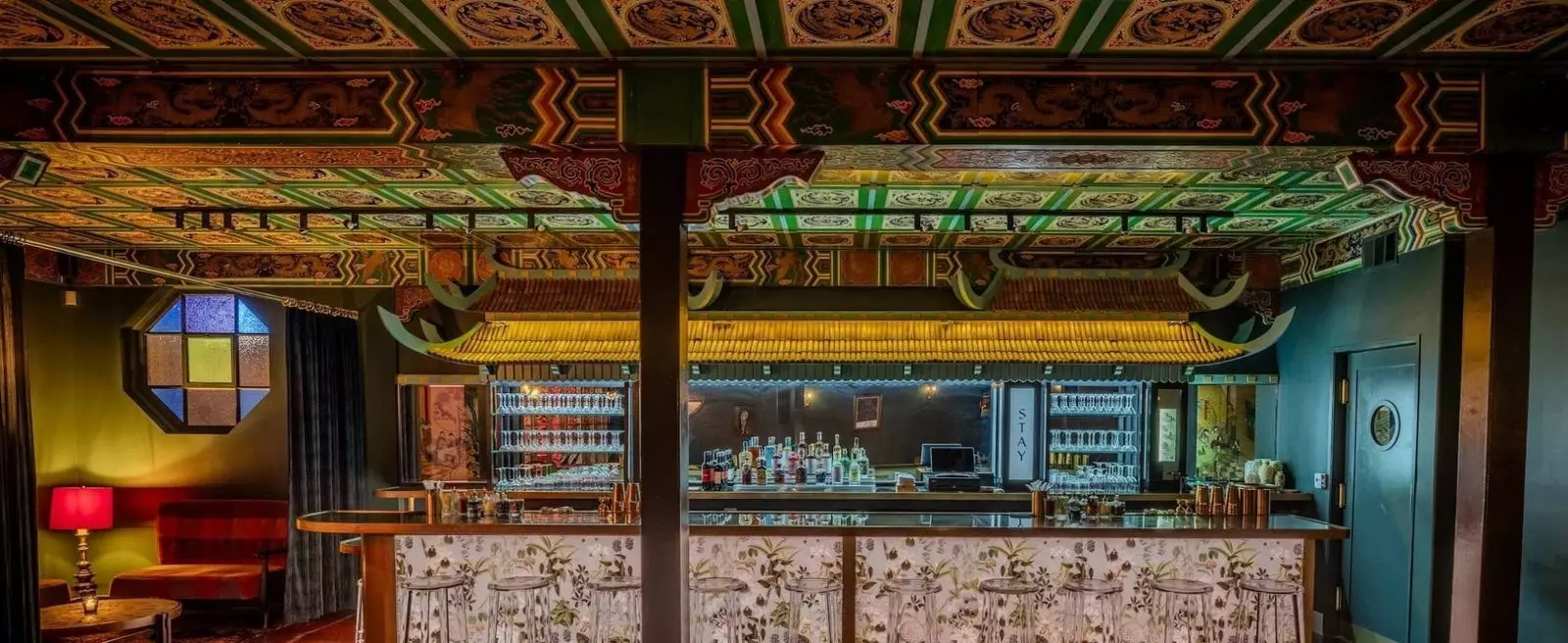The opening of STAY., Los Angeles’ first non-alcoholic (NA) bar, in January was emblematic of a significant cultural shift towards sobriety and moderation in drinking habits. Aimed at catering to the sober-curious movement, which encourages people to explore social interactions without the influence of alcohol, STAY. carved out a niche in an industry that is witnessing a growing interest in alcohol-free alternatives. However, as quickly as it opened its doors, the bar has made the decision to close, raising questions about the sustainability of such ventures.
Upon its launch in Chinatown, STAY. was more than just a bar; it was a hub for social connections and community engagements. The owners, Summer Phoenix and Stacey Mann, envisioned a sophisticated environment that mixed modern chic with subtle nods to Chinese culture. The establishment featured a curated menu crafted by renowned mixologist Derek Brown, showcasing intricately designed drinks that mimicked classic cocktails. Whether it was the old-fashioned or the margarita, each drink was a testament to the creativity and potential of NA beverages.
But while STAY. aimed for sophistication, it faced the inherent challenge of attracting a crowd in an entertainment landscape dominated by traditional bars. Despite the growing interest in NA beverages, such establishments often struggle to draw patrons who have grown accustomed to conventional drinking spaces.
Mann’s remarks concerning the challenges faced by STAY. reflect a larger narrative within the NA bar movement. Although the public’s interest in reduced alcohol consumption appears to be on the rise, persuading them to visit an NA establishment proves to be trickier than expected. The dynamics of socializing—where drinking is deeply ingrained—creates an uphill battle for venues like STAY. While some NA bars in cities like New York City and Austin manage to thrive, the formula for success is often more intricate than simply serving up non-alcoholic drinks.
Chris Marshall, the pioneering owner of Sans Bar in Austin, lends insight into how non-alcoholic bars can bolster their revenue streams. He emphasizes the necessity of diversifying income sources by renting out spaces or consulting on cocktail menus for other bars. This flexible approach allows NA bars to cultivate a broader community while remaining financially viable.
Building a supportive community is vital for non-alcoholic venues. Marshall points out that creating a space where patrons can see themselves reflected in the clientele will take time and persistent efforts. Traditional bars benefit from well-established drinking cultures, but this isn’t the case for many NA bars, where the clientele is still being defined.
Marshall’s prediction that it may take five years to see a proliferation of NA bars echoes the growing pains that often accompany new trends. While the trend is undoubtedly on the upswing, the realization that the road ahead remains fraught with challenges is critical. NA bars need dedicated patrons willing to embrace change and the absence of alcohol as an alternative.
The closure of STAY. serves as a cautionary tale for those interested in entering the burgeoning market of non-alcoholic bars. While the sober-curious movement is gaining momentum, the reality is that creating and sustaining a successful NA bar requires more than just a clever concept; it demands community engagement, strategic partnerships, and a rethinking of how socialization occurs in an alcohol-free environment.
As the NA beverage industry continues to evolve, STAY.’s experience will undoubtedly inform future ventures. Adapting to this new cultural landscape will be imperative for non-alcoholic establishments as they strive to redefine social interaction and prove their lasting relevance. While STAY. may have closed its doors, the conversation surrounding sobriety continues, paving the way for what could potentially be a robust future for alcohol-free establishments.

